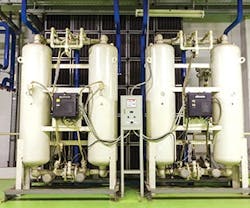GSA Reviews 3 Top Technologies
Which green technologies are the most cost-effective? It can be hard to cut through the greenwashing and determine which energy-saving claims are the most credible.
To ease the frustration, the General Services Administration (GSA) – charged with maintaining the federal government’s real estate portfolio – tests building technologies to determine which are most effective.
The agency recently released the results of several studies greenlighting the use of three energy-efficient technologies: condensing boilers, variable refrigerant flow HVAC, and PV systems.
Condensing boilers, ultra-efficient water heaters that use waste heat to preheat cold water entering the boiler, reduced natural gas consumption by 14% in the Atlanta federal building where they were tested.
The technology’s low operating and maintenance costs and brief payback period mean it can be “easily deployed as older boilers are replaced,” say researchers, who predicted the boilers could save roughly 1% of the agency’s total annual energy consumption if used in every federal building.
Variable refrigerant flow: This HVAC technology, which can simultaneously heat and cool different areas of facilities to enable tighter temperature control, was tested at a Boston courthouse and reviewed by industry experts. GSA predicts VRF could save roughly 34% on energy compared to older systems, but plans to study the issue further.
The agency also opted to study photovoltaic panels in Indiana to determine their efficacy in cloudy Midwestern climates, as opposed to the sunny coastal climates and desert areas where they generally offer maximum returns.
A commercial-scale array and four smaller laboratory systems installed at the Bean Federal Center in Indianapolis were found to work just as well in the Midwestern climate as in other parts of the country. The commercial-scale system alone generated roughly 8% of the facility’s energy needs.
To read more about the results, visit gsa.gov/GPG.
